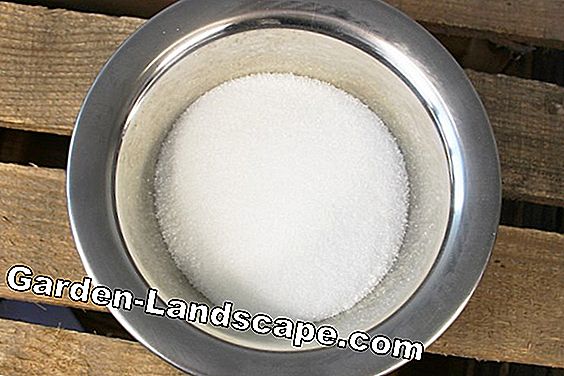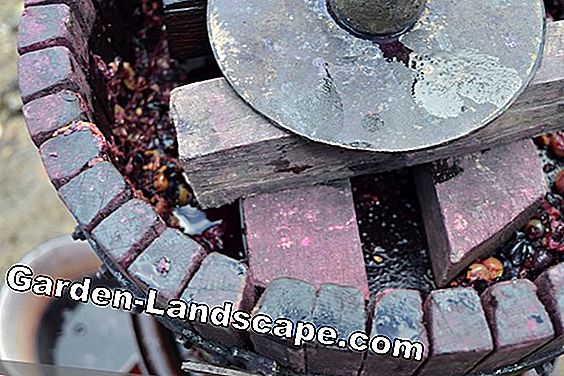How to Make Alcohol From Juice Without Yeast
Make your own wine without yeast - yeast-free alcohol - instructions
The Content Of The Article:
- Select fruits
- Accessories
- The preparation
- Whole fruit or juice
- Adding sugar
- Add the other ingredients
- bottling
- Location
- waiting period
- Preserve
- Bottling
- It will be hard without yeast

In earlier decades, it was sometimes still common to make the wine itself and to use this also no yeast, which actually fermented the wine into wine. Often, however, there are also recipes from grandmother's time, in which no yeast was used. However, this wine does not always succeed, and such a home-made wine is only allowed for its own consumption and must not be sold.
Select fruits
Wine can be produced from almost all fruits. The best known are grapes and apples, but also strawberry or cherry wine are very popular in some regions. It is important to produce the wine without added yeast that the selected fruits have no shell that must be removed before. Because on the surface are bacteria and microorganisms, which are absolutely necessary for the production of wine without added yeast. Thus, in addition to the above, the following fruits are suitable for wine production:- raspberries
- rhubarb
- blackberries
- pears
- Apricots or peaches
Accessories
Before the fruits are prepared, the necessary accessories and ingredients should be provided. So it is faster after selecting the fruits, if they are to be processed into wine. Therefore, the following things should be ready before starting work:- a vessel made of plastic or glass
- with matching cover
- the so-called fermentation vessel
- Here the wine can ferment
- suction hose
- kitchen scale
- Vinometer for displaying the alcohol content
- Sugar and citric or lactic acid
- carbonate of lime
- pyrosulphite

Tip: In such a beginner set also the yeast is included, which should then be left out in the own production of wine without yeast then simply. Likewise, here is usually a recipe, in which only the amount of ingredients must be converted according to your wishes.
The preparation
If the fruits have been selected for the wine, they must be prepared. Usually these should also be washed, but if no yeast is used in addition, then the washing should be omitted. Because that has the reason that on the surface of bacteria and microorganisms have set, which are important so that the must later also ferment and so becomes the alcoholic wine. Because this is the real task of the yeast. Therefore, if no yeast should be added, the bacteria and microorganisms on the fruits must take on this task. Otherwise, the fruits are prepared as follows:- choose ripe fruits
- these should have no quirks
- no putrid bodies
- no signs of ruin
- have the chosen fruits cores, remove
- then weigh the fruits carefully
Whole fruit or juice
For the production of wine, the whole fruit and only the juice obtained from it can be used. If the wine is to be made without yeast, however, it is recommended to use the whole fruit with peel. Because just sit on the shell for the microorganisms and bacteria needed for fermentation. If only the juice is used, this will be without yeast addition only musts and no alcoholic wine, as a fermentation is then as good as impossible. For example, the selected fruit is processed as follows for the mash fermentation:- use whole fruit
- crush
- alternatively puree
- Also edible shell is used here
Adding sugar

- Add sugar immediately
- In this case, the complete sugar from the recipe is added immediately
- the amount depends on the formula
- gradually add sugar
- In this case, the sugar is added only at the beginning of fermentation
- gradually in four portions per day
- more elaborate but effective
Add the other ingredients
Lemon or lactic acid does not need to be added during wine making from grapes. Because in these fruits already enough fruit acid is contained. If other types of fruit are used, then the acid should still be added to start the fermentation process. The kohlesaure lime, however, is mixed in, so that excess acid from the fruits is again buffered something. If all ingredients are in the mash, then this is filled into the fermentation vessel.bottling
When all the ingredients have been mixed together, then the mash must be transferred to the fermentation tank. Here the mixture must rest now. Fermentation begins with added yeast about the third day, no yeast was added, it takes a little longer. When bottling should still be paid to the following:- initially only fill the container halfway
- is more mash available, better use two containers
- the amount of liquid will double by the fermentation
- put on special lid
- this one has a special closure
- emerging carbon dioxide can escape here
- but it must not penetrate oxygen
Location
The ideal temperature for fermentation is between 18° and 20° Celsius. In addition, the fermentation tank should be placed so that it can remain in this place for the next few weeks. Because the mash must rest and therefore should not be moved. Ideal locations for the fermentation process are therefore the following, if the appropriate temperature is given in the long run:- a basement
- the pantry
- a storeroom
waiting period
If the mash was filled into the fermentation tank, this well sealed and spent at the selected location, then it is time to wait. If a container made of glass is used, then this has the advantage that the mash can be observed from the outside. During the waiting time, the following should happen:- Fermentation starts after a few days
- is indicated by heavy bubbling
- This maturation lasts at least four weeks
- If there are no more bubbles, the fermentation is finished
Preserve

Tip: If you are in a hurry, you can immediately filter the liquid through a fine cloth, because the sinking again means a little waiting time.
Bottling
The bottles used must be absolutely clean and, above all, dry. Therefore, these should be well prepared. A decoction helps to sterilize them before bottling. The drying should then take place over several days in a warm place in the air. To do this, the bottles are turned upside down on a clean cloth. When refilling bottles, the procedure is as follows:- Use suction hose from starter set
- hereby fill the wine from the fermentation tank into the bottles
- Close each bottle immediately
- best suited for this are the classic corks
- These should be new and therefore clean and sterile
It will be hard without yeast
It's hard to make your own wine without the addition of yeast. Because this is in addition to the fruits an important ingredient to make an alcoholic beverage from must. This is not always the case, for example if there are only a few bacteria or the wrong ones on the shell. Therefore, it is always advisable not to do without yeast for your own production of wine.This is by no means the well-known baker's yeast from the supermarket, but pure yeast, which is already included in a starter set for your own winemaking.Video Board: How to make WILD FERMENTED Homemade Grape Wine.
How to Make Alcohol From Juice Without Yeast
Source: https://en.garden-landscape.com/wine-do-it-yourself-without-yeast-yeast-free-alcohol-guide-3125
0 Response to "How to Make Alcohol From Juice Without Yeast"
Post a Comment